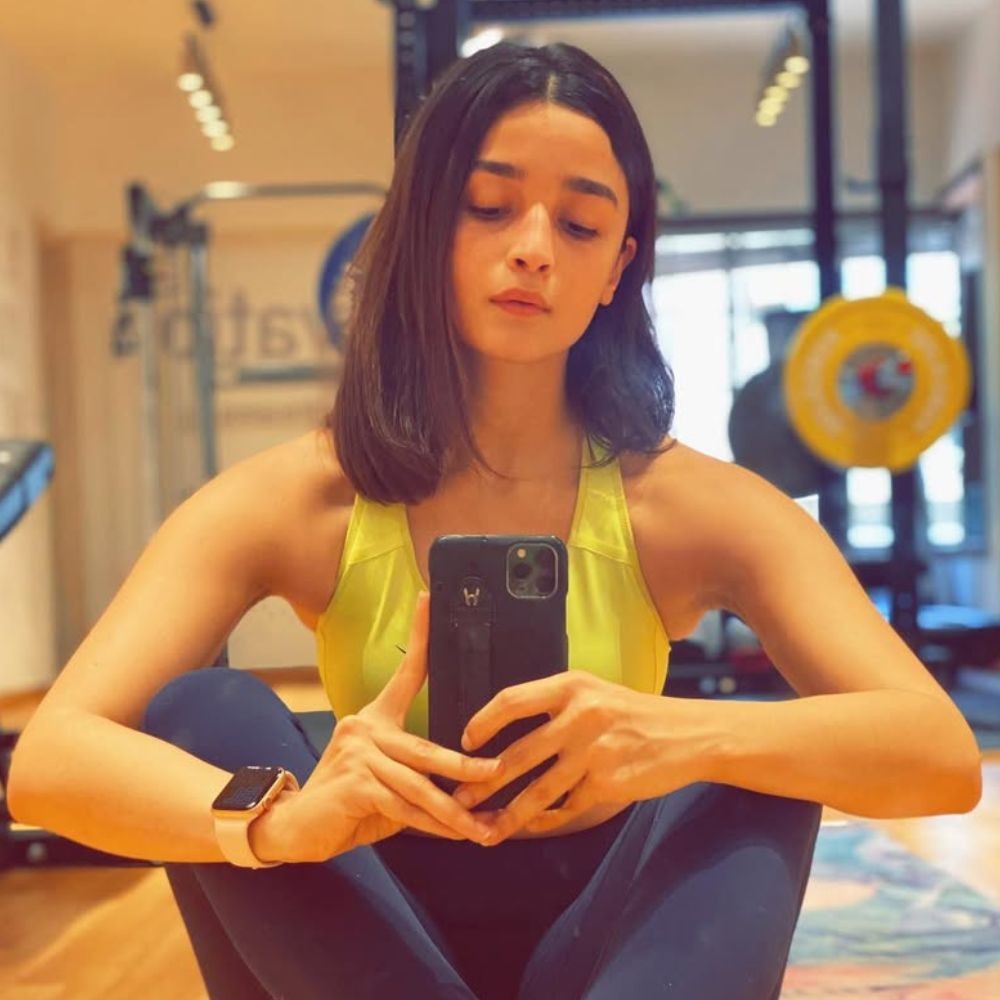Garland Pose (Malasana): The Hip-opener You Need in Your Yoga Routine
Garland Pose (Malasana) offers a bounty of benefits for both body and mind. Give it a try and let its restorative powers unwind your body and mind.
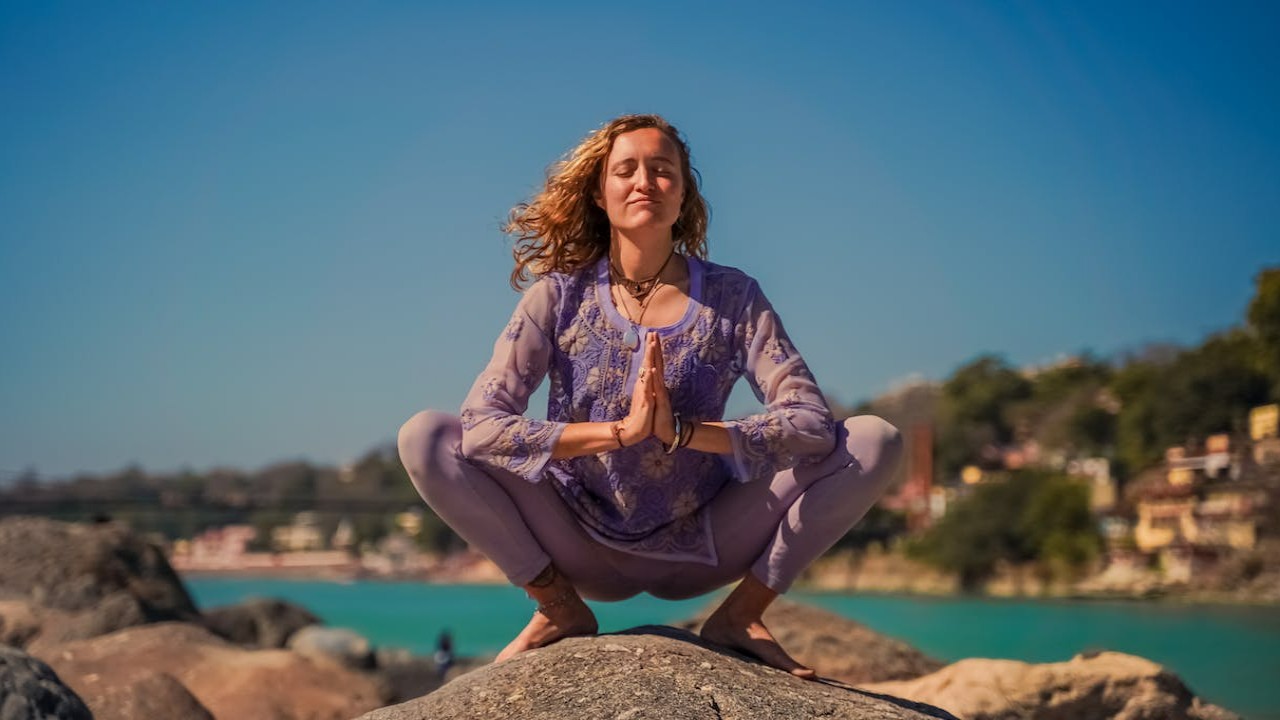
Modern life has left our legs weak and our hips tight. Blame it on too much sitting and too little squatting. But the ancient yoga pose, Malasana, can reverse the damage — Malasana or the Garland Pose is the squat to end all squats. Not the most aesthetic and certainly highly primal, Malasana can be considered a potent antidote to the sedentary lifestyle of the modern-day corporate worker.
This is the reason why: when we sit for prolonged periods, the enzymes that break down fats become less active, leading to cholesterol buildup and potential heart issues (1). However, holding a deep squat like Garland Pose causes our leg muscles to contract significantly more than if we were sitting (2).
Our contributor Dr. Allen Conrad, Doctor of Chiropractic at Montgomery County Chiropractic Center, says, “Exercises like squatting can help strengthen core muscles. When you sit for prolonged periods of time, you tend to slouch and develop poor postural habits. Doing squat exercises helps strengthen the abdominals, paraspinal and quadriceps muscles. These help strengthen your overall core biomechanics too.”
This keeps those fat-busting enzymes pumping. Of course, diet and lifestyle matter too, but incorporating more squatting throughout the day can certainly support heart health.
There is more — the deep squatting on your yoga mat in Malasana goes beyond physical benefits. The pose activates the Muladhara, or Root Chakra (located at the base of the spine), fostering a sense of connection. For the uninitiated, this chakra lays the foundation for life and is responsible for the development of an inner sense of security and stability. So, by strengthening the Muladhara through Malasana, we can overcome challenges, gain a boost to our sense of self, and move with confidence in our daily lives. When we feel present and anchored in our practice, it becomes easier to let go of distractions.
Ahead we dive deeper into this enigmatic pose.
What Is Garland Pose (Malasana)?
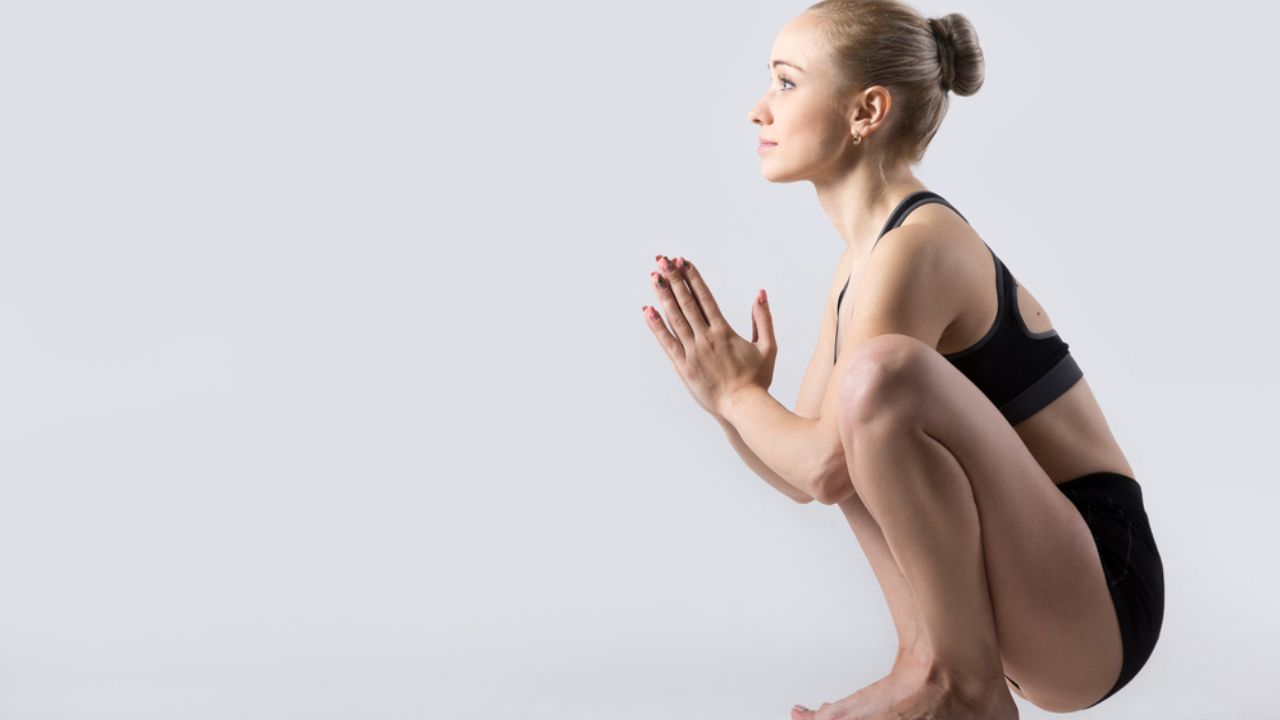
Malasana (muh-LUH-suh-nuh) is aptly named after the Sanskrit words mālā ("garland") and āsana ("posture"). With origins in ancient Indian culture, this squat pose resembles a beautiful garland draped around the neck, with the arms elegantly looping down like strands of flowers. Spiritually, wrapping the arms around the shins mimics circling a mala of prayer beads around the neck during meditation. Each flow through this pose is like an offering of devotion. In essence, Garland Pose strengthens our body while centering our spirit.
However, the pose is nothing like a delicate garland. It is a powerful squat and you can expect quite a burn in the inner thighs as you sink your hips low in this pose.
With consistency and necessary modifications, you can deepen into the challenging Malasana pose and work up to the full expression of its unbound grace and power.
As you begin to incorporate Malasana into your daily yoga routine, you also start tapping into its vast benefits.
6 Life-changing Benefits of Garland Pose (Malasana)
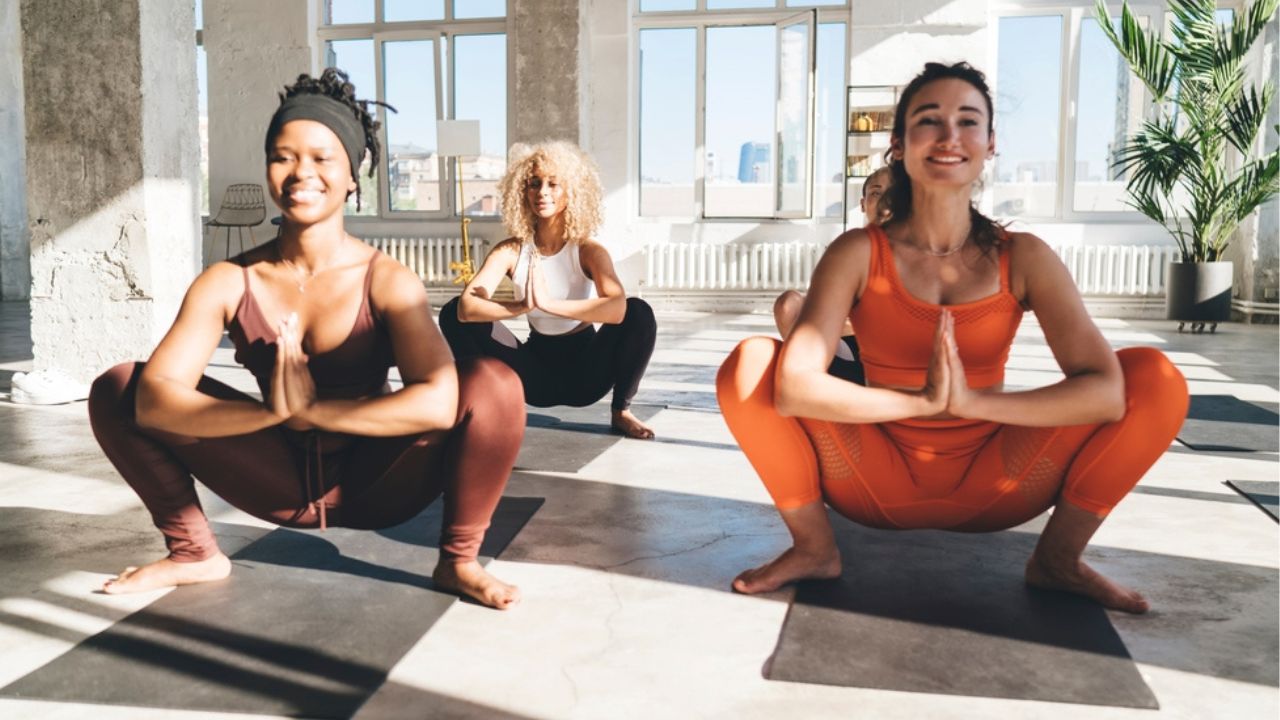
With professional guidance, Malasana can be a superhero pose to help combat myriad health woes. It may:
1. Improve Metabolic Syndrome
Malasana has been studied as one of the yoga poses that helps improve metabolic syndrome in middle-aged adults (3). Simplified, metabolic syndrome refers to a cluster of cardiovascular risk factors associated with diabetes and cardiovascular disease. According to research, regularly practicing asanas, including Garland Pose, can help improve heart health, reduce waist circumference, and improve blood sugar levels — all pointing to a healthier you.
2. Tone the Lower Body
Malasana tones and strengthens the entire lower body, from the quadriceps to the calves. Not only that, but holding Malasana tones your glutes, thighs, and belly by engaging your core muscles. So, fire up your core with a strengthening ab workout as you sink into the deep Yogi squat.
3. Enhance Mobility
You can stretch and lengthen your ankles, tight hamstrings, back, and neck with Malasana. As you move into the squat, you stretch the hamstrings, open up the hips, and improve mobility in your joints, including the hip sockets. Overall, expect looser hips, open thighs, and free shoulders with regular Malasana practice as this posture stretches the lower body and upper back gorgeously.
4. Help Symptoms of PCOS
Polycystic Ovarian Syndrome or PCOS in short is an endocrine disorder that afflicts women far and wide with hormone mayhem and unpleasant symptoms like menstrual irregularities, weight gain, depression, etc. Malasana is a potential natural remedy to regulate menstruation and rein in those raging hormones. As a part of a yoga routine, it can also help with symptoms of depression and help you make better dietary and lifestyle choices (4). While Garland Pose is not a replacement for prescribed treatments for PCOS, with professional guidance, it can complement them beautifully and help manage the symptoms.
5. Boost Digestion And Relieve Constipation
Malasana aligns your body in the natural position that allows uninterrupted flow for easier bowel movements — the way our ancestors used to go, much before the invention of western toilets. The squat also stretches the core and stimulates the intestines, encouraging things to move along, flushing out toxins and waste, and leaving you cleansed from the inside out. Research suggests that regular yoga practice can positively impact gastrointestinal health, including digestion and bowel movements (5). So, get your digestion humming with a gentle massage to the abdominal muscles and organs, and find your freedom in regular bowel movements with this potent squat in your practice.
6. Help Find Emotional Release
In many circles, hips are considered to be the storehouse of pent-up emotions. This is where a significant portion of Malasana’s power lies — by helping open up the hips and unlocking the emotional energy stored there, it facilitates a deep emotional cleansing. As you release physical tension, you may experience a surge of feelings. This emotional cleansing restores balance between mind, body, and spirit. Don’t worry, you won’t be the first or the last to have had a good cry on the mat.
Sharing more about Malasana, our contributor Bayu Prihandito, a Life Coach, and RYT 200 Yoga Teacher, says, “Regular practice of Malasana (Garland Pose) can greatly improve your emotional health as it releases any built-up tension stored in the hips, often linked to emotional stress. This release can lead to feeling less anxious and a more balanced emotional state.”
Malasana can help find your calm center, realigning posture along the way and stoking your metabolic fires to burn brighter. Last but not least, based on anecdotal evidence, this Yogi squat may help bring some relief from urinary incontinence by strengthening the pelvic floor and calming the nerves to minimize leaks.
You may be tempted to grab your mat right away and get squatting, but hold tight till you familiarize yourself with some common mistakes to avoid and some potential risks of Malasana that we share up ahead.
Malasana Pose Precautions: Common Mistakes And Risks to Avoid
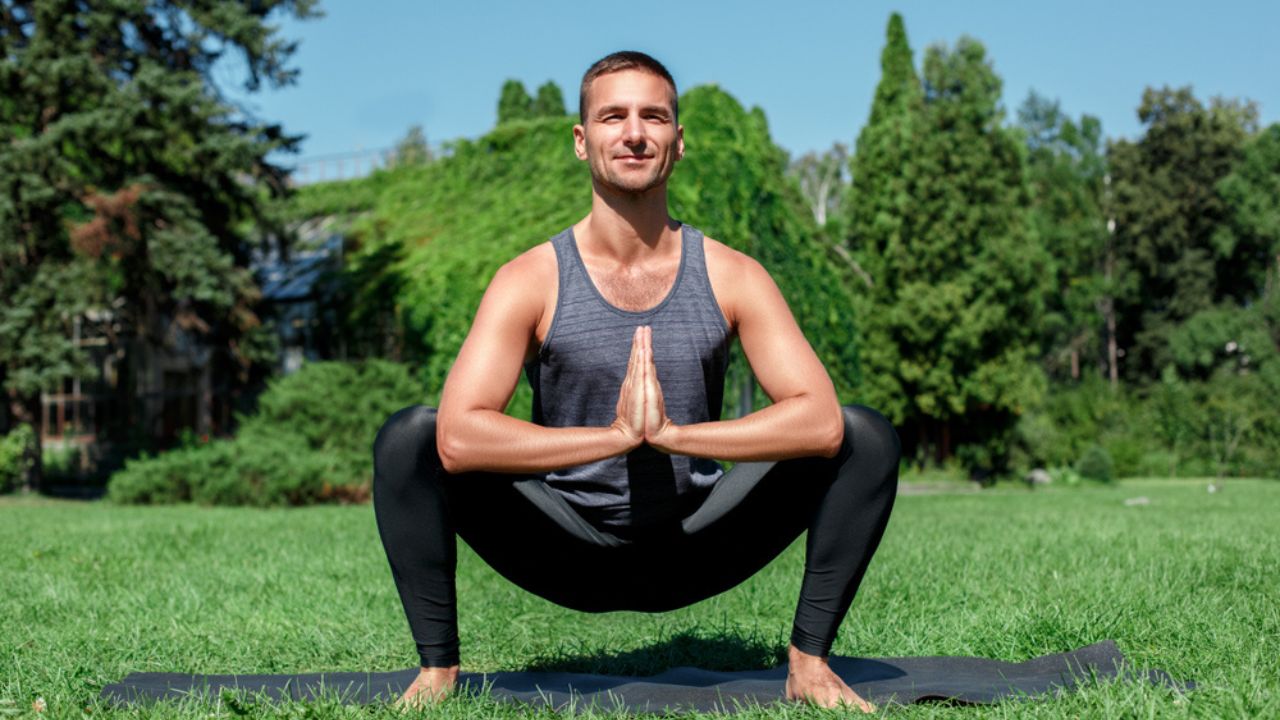
Malasana, the deep yoga squat pose, offers many benefits, but it must be accessed with caution. This powerful posture strengthens legs and ankles while opening hips and stretching the back. However, improper form or overexertion can lead to injury. Heed these precautions when attempting Malasana:
1. Practice Garland Pose on an empty stomach. It is recommended to wait at least four hours after eating before you get into the yogi squat to avoid cramps or nausea.
2. Distribute weight evenly across the feet. Don't overload heels or toes, which strains joints. Instead, engage your leg muscles to share the load.
3. Avoid overstretching. Know your limits and start with short holds, gradually increasing duration.
4. It is important to ease in and out of the pose and move slowly and mindfully as rushing through it can overburden your knees or hips.
5. Tune inwards as you get into Garland Pose. If you feel pain or pinching, chances are that you have improper alignment. In that case, come out of the pose and retry with adjustments.
6. Don't squat immediately after running or other similar exercises that fatigue your leg muscles. Allow ample time for recovery before you squat in Malasana.
Who Should Avoid Garland Pose?
While Malasana is suitable for most yoga practitioners, it is recommended to avoid or seek professional counsel before practicing it in some cases, such as:
- A history of knee, back, or hip issues
- Chronic knee or lower back pain
- An injury of foot or ankle
- Bone or muscle-related issues
- Severe sciatica
Pregnancy
When practiced mindfully, Malasana expands strength and flexibility. But heed the body's signals, move slowly, and don't overdo it. With care and experience, you'll reap the powerful benefits of this squat.
Conclusion
When integrated into your daily yoga practice with care, Malasana Pose weaves together strength and flexibility, leaving you feeling refreshed and renewed. Regular practice of Malasana keeps the legs supple, the hips flexible, and the mind clear. Simply sinking into a deep squat for a few breaths a day can offset the effects of modern living and empower you to say goodbye to achy hips and poor posture. Don't underestimate this humble pose — it can transform your body from the hips down!
Contributor: Dr. Allen Conrad, BS, DC, CSCS, and Owner of Montgomery County Chiropractic Center
Bayu Prihandito, Certified Psychology Consultant, Life Coach, and RYT 200 Yoga Teacher, Founder - Lifearchitekture





 JOIN OUR WHATSAPP CHANNEL
JOIN OUR WHATSAPP CHANNEL


































































